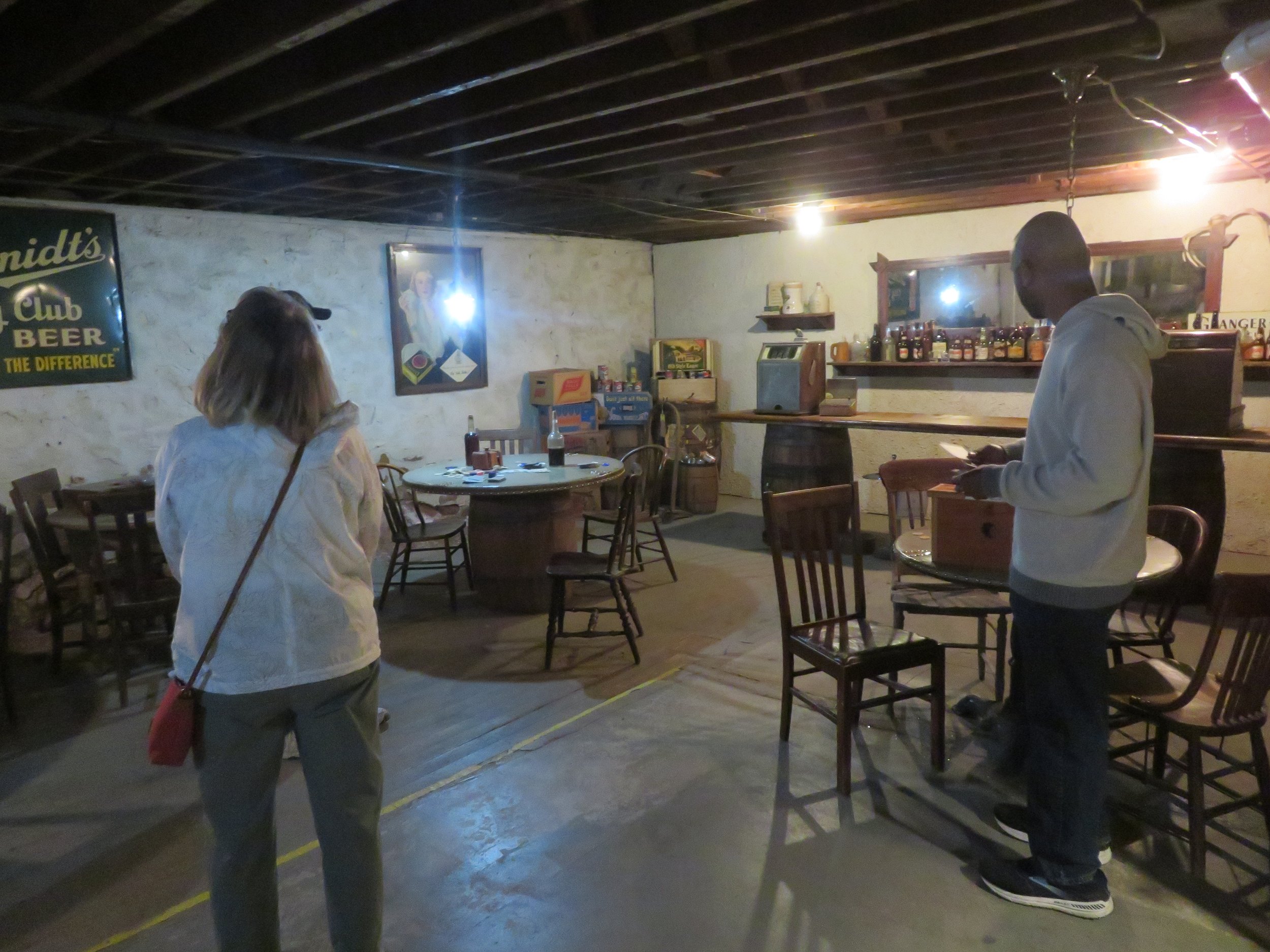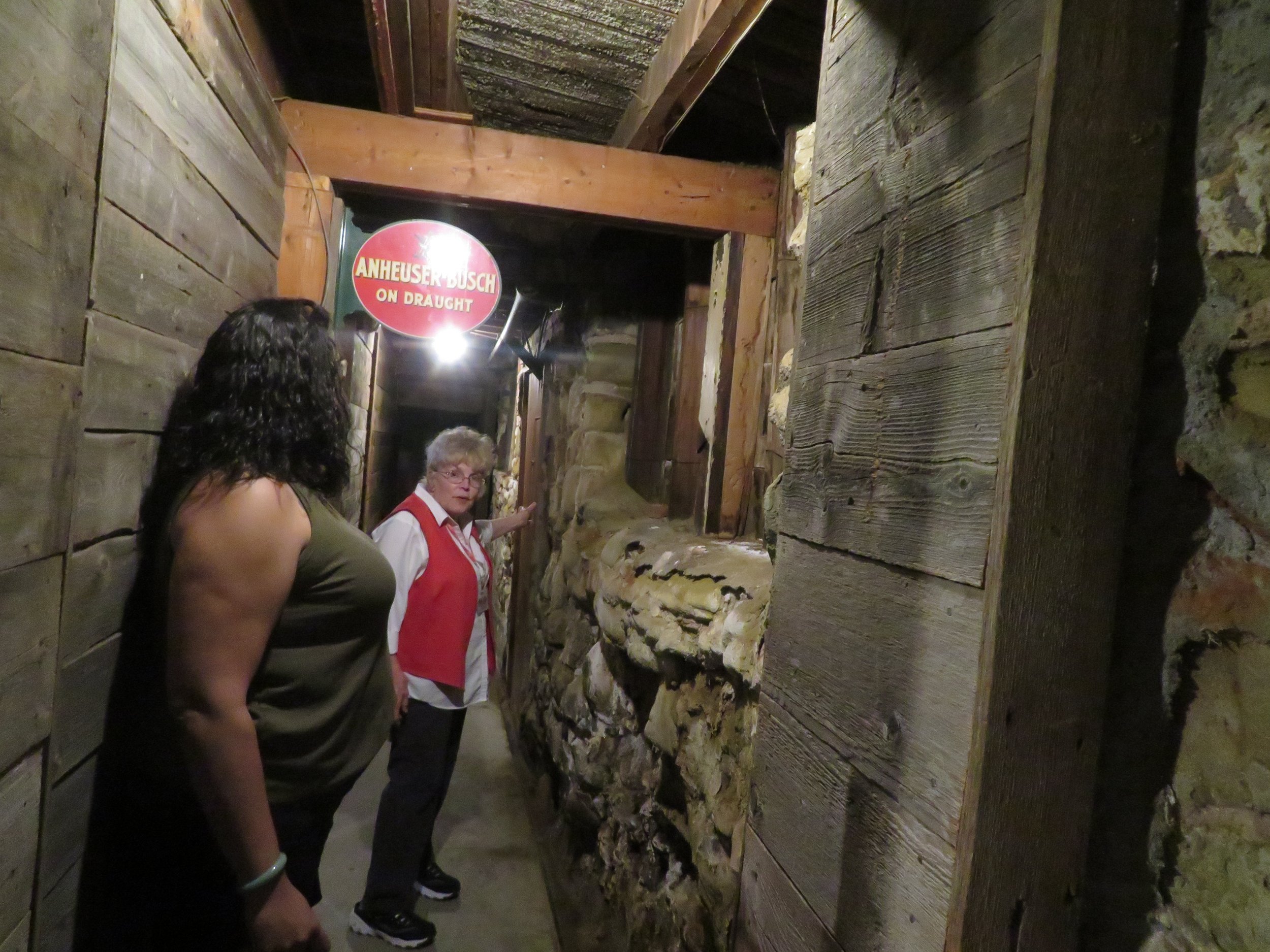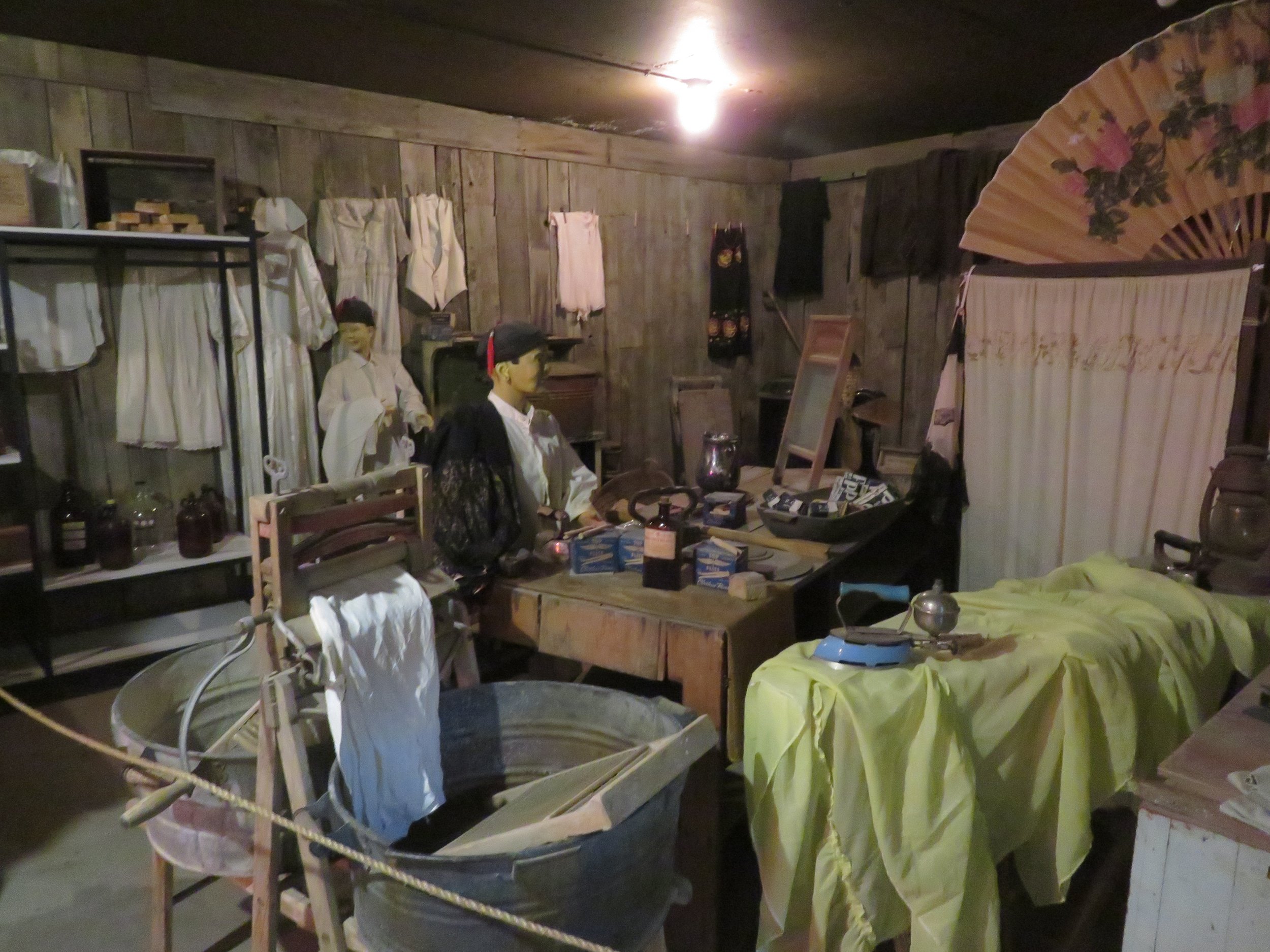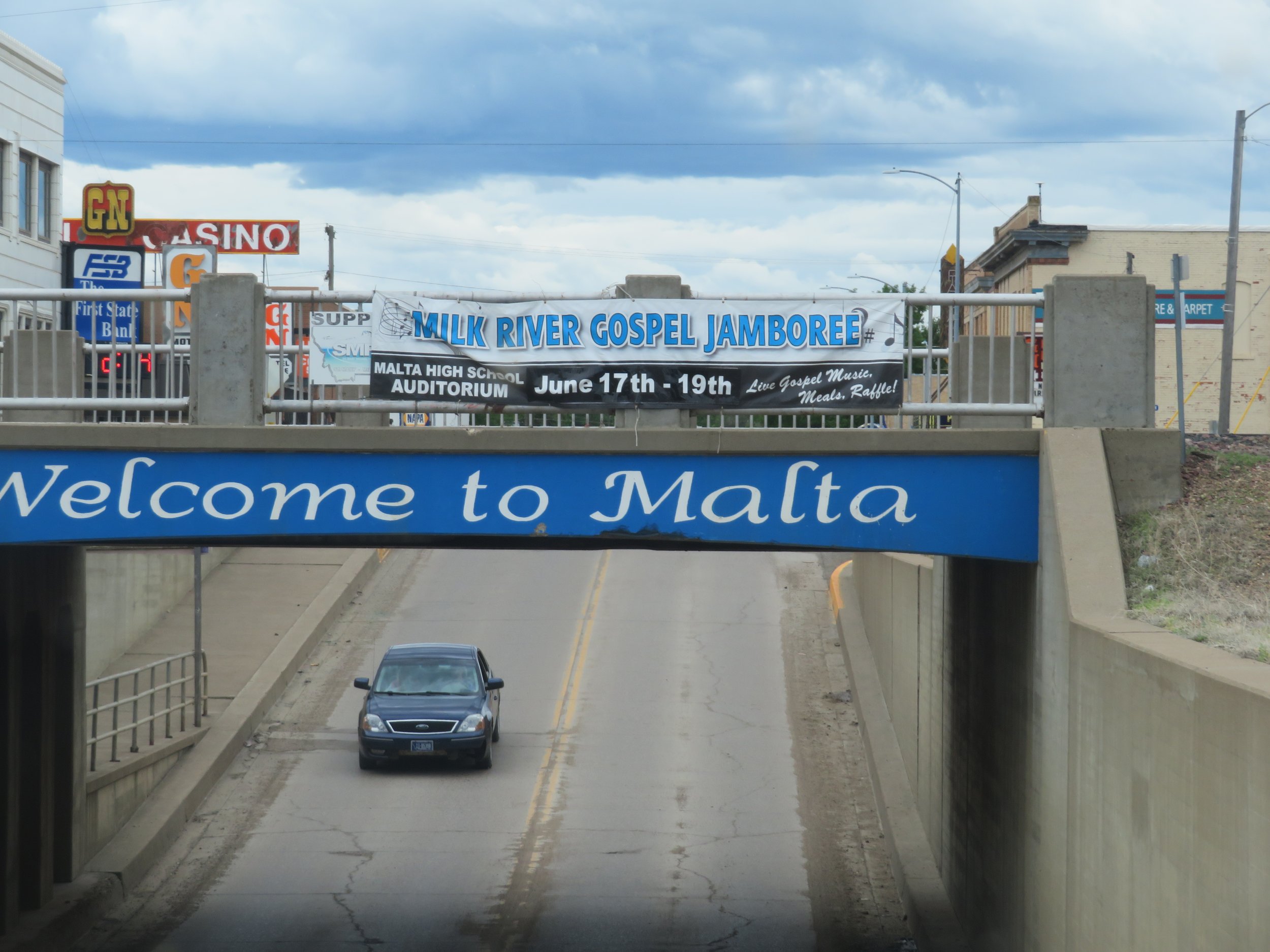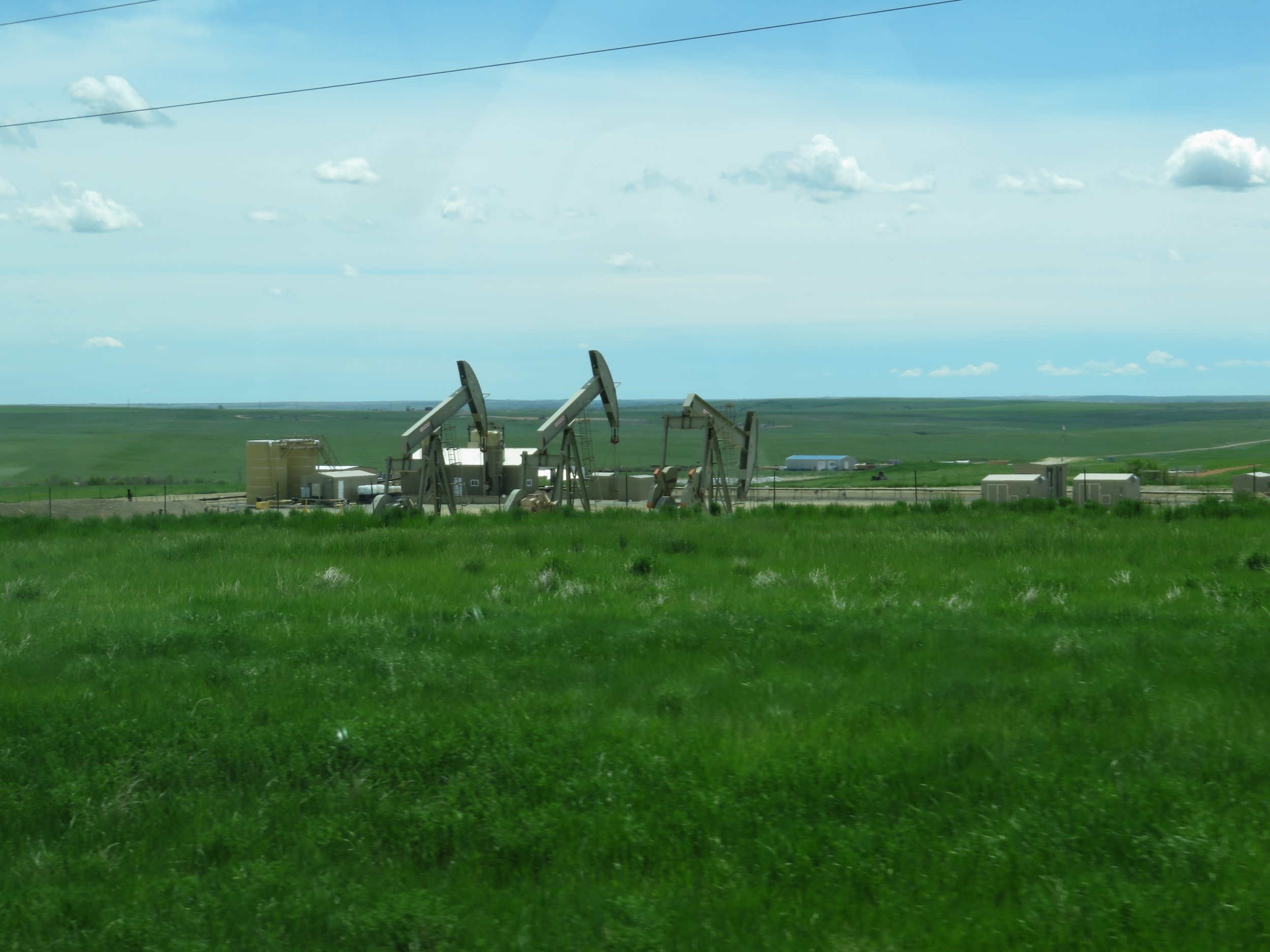Exploring an Underground City
/Day 12 - Sometime during the night, the wind calmed down. We woke to the sound of a train whistle… not so unusual these days. Shelby was originally established as a Great Northern railroad town and we bumped across lots of tracks getting out of town. There’s not much for 100 miles between Shelby and Havre, prounounced Hav-er even though it was named after the French port city of LeHavre. Evidently the railroad ran out of station names after a while and started choosing world city names for their stops… Dunkirk, Devon, Inverness, Kremlin, Fresno, Harlem, Zurich and Malta, for instance.
Wheat farms prevail here on the flat prairie lands we call the Great Plains. There’s an upheaval of mountains every once in awhile that provide some perspective of distance for the eye.
Grain elevator after grain elevator appear along the roadside with railroad tracks alongside for easy loading of grain. Neat farmhouses with huge silos and lots of heavy farm equipment provide much of the scenery. Long trains of tanker cars snaked along the tracks, and raced along beside us.
I’d read about Havre’s underground city, Havre Beneath the Streets, and had called to make a reservation for a 9:30 am tour. The speed limit on US-2 in Montana is 70 mph. We figured if we left Shelby by 7:45 am latest, we’d have plenty of time. As we were pulling out of the campground, I glanced at my watch… 8:05. Yikes, we’d totally lost track of time. There wasn’t much traffic, but the speed limit slowed to 35 mph as we passed through small towns. At 9:15, I called and told them we might be a few minutes late, but could reschedule for later in the day, if necessary.
As it turned out, we pulled into a parking place exactly at 9:33 and when we rushed into the office to purchase tickets, the tour was waiting for us. ‘You can pay for your tickets after the tour. No problem!’. With that said, we were off with four other folks heading to Havre’s underground city.
A fire in 1904 totally leveled several blocks of the city’s commercial center. The business owners improvised. All the shops had substantial basements which had not been damaged. Tunnels were dug and holes were knocked through walls to form a maze of connected shops and businesses, a warren of underground commercial activity,
Kathi, a retired high school teacher, was an animated, knowledgeable tour guide who obviously loved what she was doing. She provided lots of colorful background story about some of the characters who’d lived in town. We left the gift shop/ticket office /railroad museum and walked outside on the sidewalk for a bit, entered the doorway of the Eagle, a fraternal club and bar, then descended a flight of stairs into the old Eagle Saloon.
We walked through narrow corridors of wood and brick, under thick wooden beams and through archways. Through one doorway, we entered the red light district, a bordello.
We wandered through a warren of shops and services. There were meat markets, a pharmacy, a drygoods/mercantile shop, a bakery, a Chinese laundry, a saloon or two and even an opium den operating beneath the charred remains of the city above. Take a look at some of the shops and services we saw.
The bordello…
The Chinese laundry…
An opium den… there were at least three of them in town.
A tack shop and saddlery….
The underground warren of a city remained in use until businesses could be rebuilt… about two year later. A testament to the . resourcefulness and resilience of the townsfolk.
We returned to the ticket office, duly paid for our tickets and checked out the small railroad museum, then we were off again. Several miles down the road we saw a sign for the Great Northern Hotel in Malta. Hmm… sounded interesting… an old railroad hotel maybe? I guess it was originally a grand hotel, “the second best hotel in Montana”, we read. We traveled under the railroad tracks to enter the town.
Built in 1904, the original Great Northern Hotel burned down In 1971. It was rebuilt in 1973 as a motor hotel and hasn’t been updated much since. We decided to stay anyway. The rooms were clean and comfy and the price was reasonable. We ate at the hotel restaurant in a dated dining room. The Xmas decos were still up, but we appreciated the linen tablecloths and napkins. Grilled trout was on the menu and it was pretty good.
We sampled a local Montana brew. Ron, a slim, stove-up fellow in a cowboy hat and jeans, was celebrating his 75th birthday with friends. They brought pieces of homemade birthday cake to our table for us. Small town hospitality is the best.
Day 13 - We slept pretty well. The mattress was a bit uncomfortable and the clickety-clack-clack of trains through the night and early morning sounded as if the train was passing through the adjoining room. The little coffee shop off the lobby with swivel seats at the counter and a couple of small tables was doing a brisk business as we headed out of the ‘motor hotel’ and loaded into Blanche.
Our travel guide, Road Trip USA, shows nothing between Malta and Culbertson, our city park campground destination for the night. Rolling green hills rise to a distant mesa on the south side of the road. Kamikaze prairie dogs play dare with oncoming cars. Evidently quite a few don’t make it judging from the crows feeding on little carcasses along the roadside. Railroad tracks are never far away. We pass through little towns… Saco, Hinsdale, Glasgow… all established in the late 1800s by the Great Northern Railroad. We appreciated Glasgow’s sense of humor.
Some folks are really train enthusiasts like David’s stepdad and our friend, George. As for us, it’s not the trains that interest us as much as the historical significance of the railroads in the expansion and settlement of the western USA. We find it fascinating driving through these little towns, each with its own unique story to tell.
We finally arrived at the city park in Culbertson. It was grassy and pleasant enough and even free, but had no fire rings and David was hoping for a campfire. It was still early afternoon, so we decided to continue on and see what else we could find.
Montana is a large, very wide state. As we were leaving the state, we noted the 667 mile marker testifying to its breadth. We entered North Dakota and just like that we lost another hour as we traveled into the central time zone.
Oil jackpumps, lots of them, dotted the landscape.
We passed through Williston and after making a quick Walmart stop, found a small campground at the Epping Springbook Reservoir for the night. The site provided electric, a fire ring, a covered picnic table and a vault toilet just across the street for $15/night, but no potable water (at a reservoir, no less). .
Yellow-headed blackbirds and killdeers wandered the grassy areas around our site looking for snacks. Rabbits and ground squirrels scampered near the tree line.
A walk, dinner on the grill, a card game, some writing, some reading then the end of another day on the Great Northern.
Next time… A taste of Scandinavian heritage in North Dakota and exploring some of my own North Dakotan roots. Come join us!




